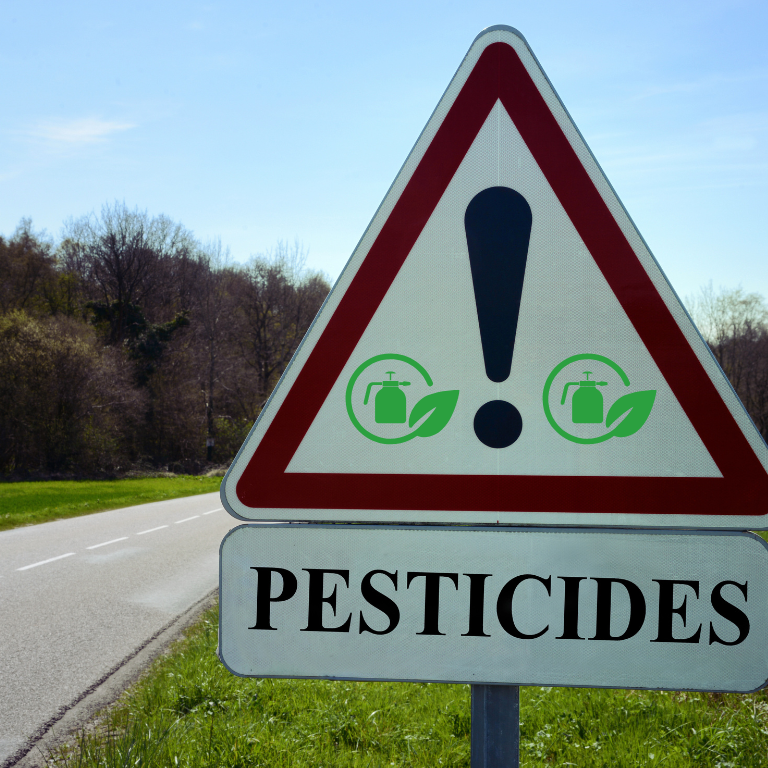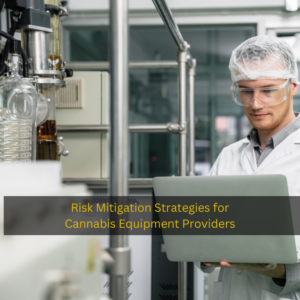Insight of Pesticide Effects and Eco-Friendly Bioremediation

Pesticide Impact on Health, Environment, and Bioremediation Solutions in Cannabis Cultivation
As cannabis cultivation expands globally, environmental sustainability and consumer safety are increasingly important concerns. Pesticide use in cannabis farming, like in other agricultural sectors, has raised significant questions regarding health, environmental impact, and ecological sustainability. While pesticides play a role in protecting crops from pests and diseases, their use comes with notable trade-offs. Pesticide residues can pose health risks to consumers, impact the environment negatively, and degrade soil health. Fortunately, bioremediation techniques and organic cultivation practices offer promising alternatives for managing pests without compromising health or environmental quality.
This article delves into the complex relationship between pesticides, health, and environmental impact in cannabis cultivation, exploring sustainable bioremediation solutions that can help reduce pesticide dependence.
Understanding Pesticides in Cannabis Cultivation
Pesticides are substances used to prevent, control, or eliminate pests such as insects, weeds, fungi, and other harmful organisms. In cannabis cultivation, pesticides are often applied to prevent crop damage that could lead to yield losses, protect plants from disease, and maintain product quality. However, due to cannabis’ unique regulatory landscape, growers face challenges when it comes to pesticide approval, usage, and residue control.
In many regions, regulatory bodies have not provided clear guidelines or legal thresholds for pesticide residues in cannabis. This leaves some cultivators uncertain about which pesticides are safe or legal to use, often leading to inconsistent practices. Even in places where cannabis-specific pesticide regulations exist, cultivators may face challenges finding effective pest management options that meet safety standards. Consequently, reliance on pesticides remains common, but it comes with risks for both human health and environmental well-being.
Health Impacts of Pesticides in Cannabis
Inhalation and Ingestion Risks: Unlike food crops, cannabis is primarily consumed by smoking or inhalation through vaporization, methods that differ significantly from ingestion. When pesticides are burned, they can release harmful byproducts or toxic residues. Studies have shown that inhaling pesticide residues can lead to respiratory irritation, toxic buildup in the lungs, and increased risks of health issues such as asthma, lung infections, and even long-term toxicity.
Bioaccumulation of Toxins: Pesticide compounds can bioaccumulate in human tissues over time, particularly in heavy users who may consume cannabis regularly. This can lead to chronic health issues, including hormone disruption, immune system suppression, neurological impairments, and, in some cases, increased risk of cancer. Some pesticides commonly found in agriculture, like organophosphates and carbamates, are particularly harmful as they can interfere with the nervous system.
Risks to Vulnerable Populations: For medicinal cannabis users, who often use the plant to treat severe or chronic conditions, pesticide residues pose even greater risks. Patients with compromised immune systems or respiratory conditions may be particularly vulnerable to pesticide exposure, experiencing heightened reactions or complications when exposed to chemical residues.
Environmental Impact of Pesticide Use in Cannabis Cultivation
Soil Degradation and Contamination: Pesticides often leave chemical residues in the soil that can persist for months or even years, leading to soil degradation and reduced fertility. Persistent pesticides affect beneficial microorganisms that support healthy soil ecosystems, weakening the soil’s natural pest defenses and nutrient availability. Over time, soil health deteriorates, leading to lower yields and the need for additional fertilizers and soil amendments.
Water Pollution: Runoff from pesticide-treated fields can carry harmful chemicals into rivers, lakes, and groundwater. This can contaminate drinking water sources and affect aquatic ecosystems, leading to issues such as fish kills, reproductive problems in aquatic organisms, and the accumulation of toxins in food chains. Pesticides used in outdoor cannabis cultivation can thus have far-reaching impacts, affecting not only the farm itself but also surrounding water bodies and communities.
Impact on Biodiversity: Pesticides can harm non-target species, including pollinators like bees, butterflies, and other insects that play a crucial role in maintaining healthy ecosystems. Exposure to pesticides can weaken pollinator populations, disrupting biodiversity and reducing crop productivity in surrounding agricultural systems. Birds, mammals, and beneficial insects that control pest populations naturally may also be adversely affected by pesticide exposure, further destabilizing ecosystems.
Greenhouse Gas Emissions and Climate Impact: Many pesticides are derived from petrochemicals, contributing to greenhouse gas emissions during their production, transportation, and application. The use of synthetic pesticides also depletes resources and generates pollution, leading to a higher carbon footprint for cannabis cultivation. This environmental toll challenges the sustainability of cannabis as an eco-friendly industry and calls for more resource-efficient practices.
Bioremediation Solutions: Sustainable Alternatives to Pesticides
Given the health and environmental risks associated with pesticide use, bioremediation techniques offer an eco-friendly solution for managing pests and contaminants in cannabis cultivation. Bioremediation involves using natural organisms—such as bacteria, fungi, or plants—to break down, neutralize, or remove toxins from the environment. Here are some key bioremediation methods that can reduce the need for pesticides in cannabis farming:
Biocontrol Agents: Biocontrol involves introducing natural predators, parasitoids, or pathogens to control pest populations. In cannabis cultivation, beneficial insects such as ladybugs, predatory mites, and parasitic wasps can help control pests like aphids, spider mites, and whiteflies. These insects naturally regulate pest populations, reducing the need for chemical pesticides.
Microbial Bioremediation: Certain microbes, such as bacteria and fungi, can be introduced to soil or plant surfaces to degrade pesticide residues and protect plants from pathogens. For instance, bacteria such as Pseudomonas and Bacillus have been shown to break down harmful pesticide compounds in soil. This practice helps clean up contaminated soil and reduces the residual impact of pesticides, promoting healthier plant growth and reducing long-term soil degradation.
Plant-Based Bioremediation (Phytoremediation): Phytoremediation uses plants to absorb, accumulate, and break down contaminants in the soil and water. Some plants, known as hyperaccumulators, are highly effective at taking up heavy metals and pesticide residues. Using phytoremediation plants alongside cannabis can help cleanse the soil, restoring its health and productivity over time.
Compost Teas and Organic Soil Amendments: Compost teas, made by steeping compost in water, are rich in beneficial microorganisms that can improve soil health and protect plants against pests and diseases. When applied to cannabis crops, these teas create a protective barrier on the plant’s surface and enhance soil fertility, reducing the need for chemical treatments. Organic amendments such as neem oil, kelp, and garlic extracts also offer pest control properties without introducing harmful chemicals into the environment.
Integrated Pest Management (IPM): Integrated Pest Management combines multiple pest control strategies, including biocontrol agents, organic pesticides, crop rotation, and habitat management, to keep pest populations in check. IPM focuses on sustainable, preventive practices rather than reliance on chemical pesticides. For cannabis cultivation, IPM can help maintain ecological balance and reduce pest resistance, as well as ensure safer, pesticide-free final products.
Benefits of Bioremediation in Cannabis Cultivation
Enhanced Crop Quality and Safety: Bioremediation methods reduce the need for synthetic pesticides, which leads to cleaner, healthier cannabis products. Consumers, particularly medicinal users, benefit from lower pesticide exposure and improved product safety.
Environmental Sustainability: By promoting natural pest control and reducing chemical use, bioremediation minimizes pollution, preserves biodiversity, and supports soil health. These methods contribute to sustainable agricultural practices that align with the values of the eco-conscious cannabis industry.
Cost-Effectiveness Over Time: While bioremediation may involve initial investments in biological agents, beneficial insects, or soil amendments, it can reduce long-term costs associated with chemical pesticides, soil degradation, and water pollution. Healthy, fertile soil reduces the need for fertilizers and other inputs, making bioremediation a cost-effective strategy in the long run.
Supporting Organic Cannabis Certification: With the rising demand for organic cannabis, bioremediation offers a pathway for growers to meet certification standards. By eliminating or minimizing synthetic pesticide use, cultivators can produce organic cannabis that appeals to health-conscious consumers and supports sustainable branding.
Challenges and Considerations in Implementing Bioremediation
Knowledge and Training: Effective bioremediation requires knowledge of the organisms used, pest identification, and proper application techniques. Growers need training and resources to implement these methods successfully, which may pose a challenge for smaller or novice cultivators.
Consistency and Monitoring: Bioremediation may not produce the same immediate, uniform results as chemical pesticides. Natural pest control methods take time to work and may require consistent monitoring and adjustment, especially in large-scale operations.
Regulatory Compliance: Pesticide regulations vary widely, and some regions may require documentation or compliance checks to ensure that bioremediation practices are safe and effective. Working with agricultural extension services and organic certification bodies can help growers navigate regulatory requirements.
Moving Forward: A Sustainable Path for Cannabis Cultivation
Incorporating bioremediation practices into cannabis cultivation provides a sustainable, eco-friendly alternative to chemical pesticides. As the cannabis industry strives to address environmental and health concerns, bioremediation aligns with the movement towards cleaner, safer, and more sustainable agricultural practices. By prioritizing these natural methods, cultivators can reduce environmental impact, ensure product safety, and protect the health of both consumers and ecosystems.
As research and technology in bioremediation advance, the cannabis industry will have access to an even wider range of biological tools to improve pest management and environmental resilience. Ultimately, embracing bioremediation in cannabis cultivation supports the industry’s growth while fostering a positive impact on public health











